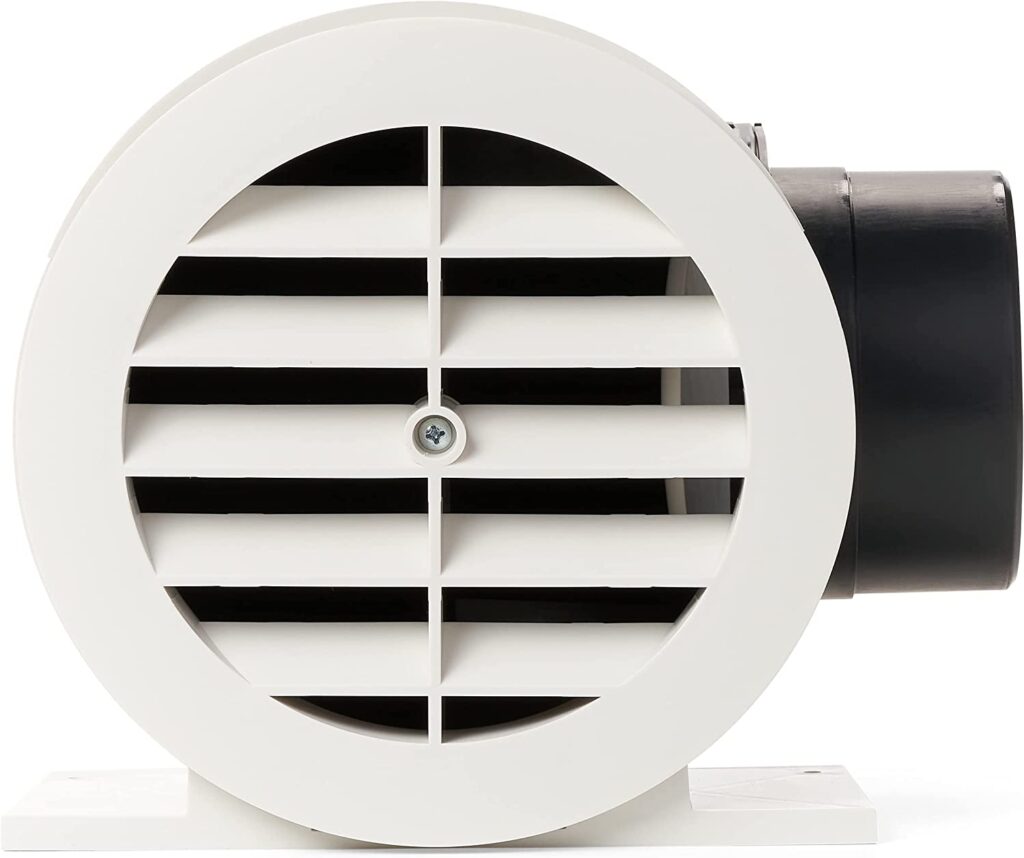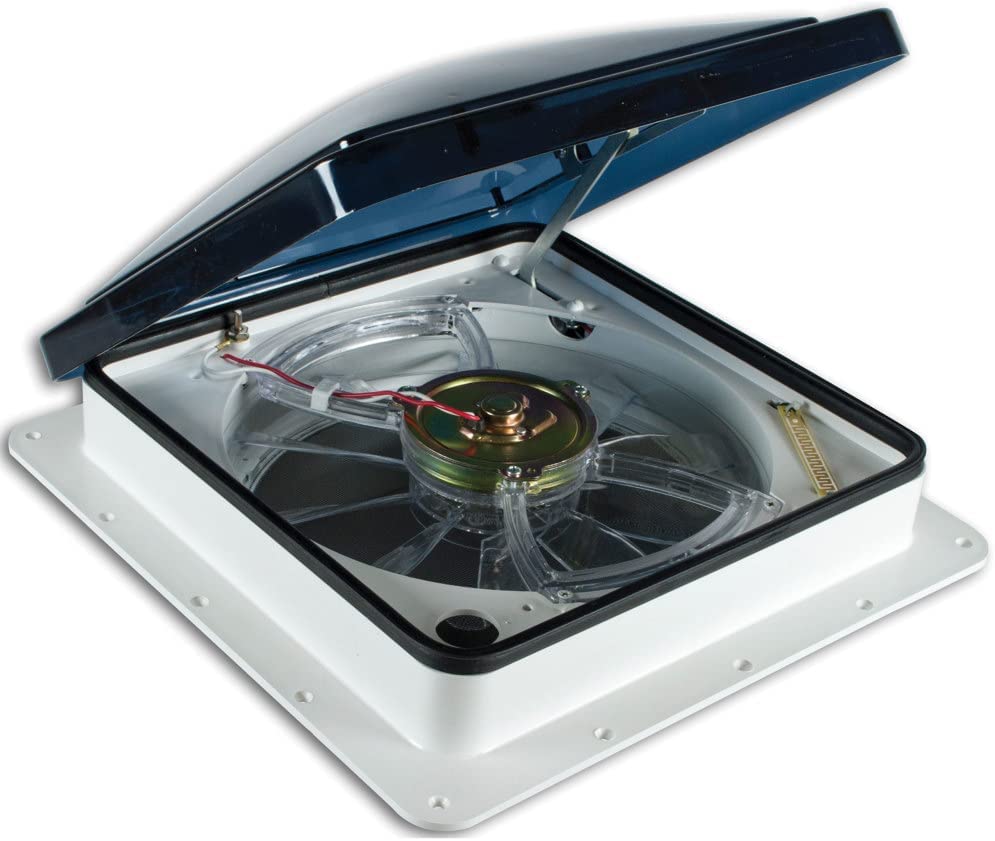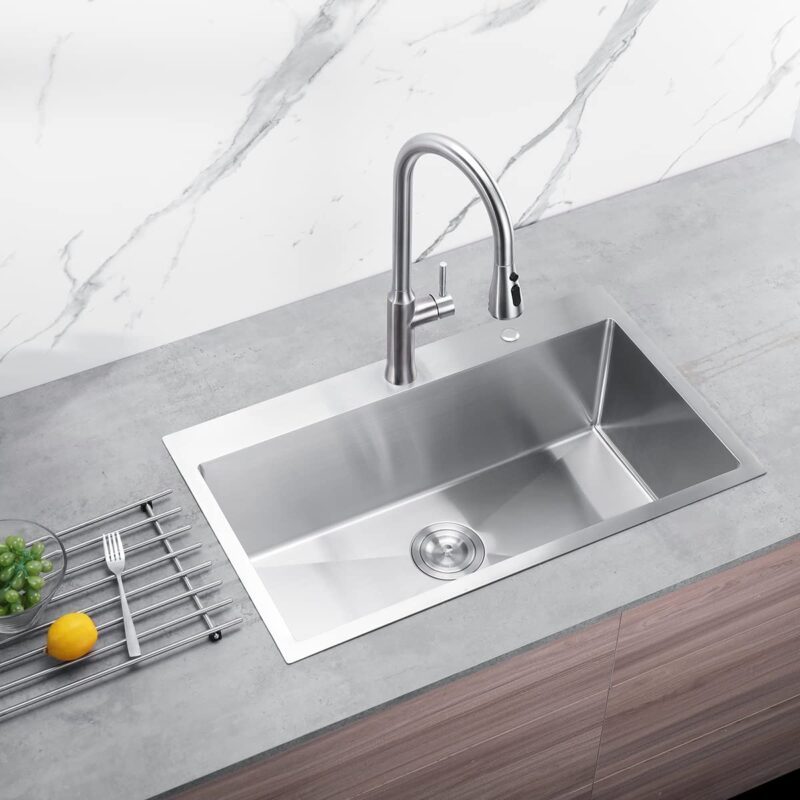How to vent a kitchen sink under a window?
Would you like to know how to vent a kitchen sink under a window? If you are planning to install a kitchen sink under a winder, it is very important to consider the design and construction of proper ventilation. A well-ventilated sink will enable the flow of fresh air and also prevent odors from coming into your kitchen as well as ensuring an efficient and effective drainage system.
This guide will help you to take the steps that are required in constructing an effective and efficient vent. We have also discussed the types of vents that can be used, tools as well as materials required to carry out the task. Whether you are a beginner, intermediate or DIYer, then this guide is meant for you.

Panasonic EZSV14
Related Articel: What causes low water pressure in kitchen sink?
Step-by-step guide for installing a ventilation system for a sink under a window
When installing a ventilation system, you will need the following tools and materials:
- Ventilation kit (includes a vent pipe, vent cap, and mounting hardware)
- Saw or drill
- Pipe cutter
- Pipe glue or silicone sealant
- Screwdriver
- Pliers
- Measuring tape
Steps for installing
- Step 1: Determining the location of the vent pipe should be the first step. The location of the pipe should be close to the sink and will extend vertically through your roof. In case you have an attic, that will be the easiest way to run the pipe through, in case you don’t have one, you will remain with the option of running it outside the house.
- Step 2: A this step, you will have to cut a hole in your wall, the hole will be used to pass or exit your pipe. The hole location should be below the window and above the sink. This process requires a drill or a saw in order to make a hole that is large enough to fit the vent pipe properly
- Step 3: In this step, you will carry out measuring and cutting the vent pipe in regard to the distance between the wall and roof or the attic. You will need a pipe cutter to the vent pipe to the required measurement.
- Step 4: Here you will need to attach the vent pipe to the mounting hardware using the glue. You can also use silicone sealant to attach the vent pipe with the mounting hardware securely.
- Step 5: The next step is to attach the vent cap to the vent pipe using a screwdriver or any other tool they can mount securely.
- Step 6: Install the vent pipe and pass it through the hole to your roof or attic. Usage of pliers will enable you to easily adjust the pipe to achieve the best straight and vertical angle.
- Step 7: The next step is to use a bucket to secure the vent pipe onto the wall. You can also use other reliable hardware to secure.
- Step 8: Connect the sink to the vent pipe with a Y-fitting. The y-fitting has a drainage and also a vent pipe that allows air to flow easily which prevents odor build-up.
- Step 9: The last step is to test the ventilation system. Turn your faucet or tap on and allow the water to run for a few minutes so that you are able to monitor the effectiveness of the drainage system. This will allow you to check if there are any leaks.

Types of ventilation systems that can be used for a sink located under a window
The following are some of the types of ventilation systems that you can use:
Soffit vent
This is a type of vent that is placed in a soffit, which is positioned under the eave of any roof. These types of vents are suitable for sinks that are positioned under the window if there is enough room to accommodate
Pros
- This type of ventilation is aesthetically pleasing.
- They are also cost-effective.
- The installation process is also easy.
- They also provide adequate ventilation.
Cons
- They require regular maintenance to clean and remove debris from the vent.
- They can be infested by pests easily.
Roof vent
This is also another ventilation that can be use. This ventilation is placed on the roof and is also great for sinks. This allows the vent pipe to run through the roof using a ventilation that is installed on top of the pipe.
Pros
- They are an effective ventilation system.
- They are also water resistant since thy are able to withstand harsh weather.
- They are also pest resistant since they are located on the roof which makes it difficult for pests to reach.
- The installation process is also easy.
Cons
- If not well installed, it may cause the roof to leak.
- Sometimes the vents can cause noise when the wind blows.
Related: When is the best time to remodel kitchen?
Wall Vent
This is a type of ventilation that is installed on the wall. This wall ventilation is suitable for sinks that are located near the wall. The vent pipe runs through the wall while on the other end, the vent cap is installed on the outside of the house.
Pros
- They are flexible because they can be installed on any wall.
- They are also resistant to harsh weather.
- They are very effective.
- The vents are also resistant to pests.
Cons
- They limit you on the placement position. They can only be placed on exterior walls.
- This type of vent generates noise which is caused by blowing wind.
Inline Vent
This kind of ventilation is installed in the drain line of the sink and is ideal for sinks that are located under the window. The air flows through the inlet vent thereby preventing odor buildup and clogs.
Pros
- They save on space, because they are placed in tight spaces.
- The vents are also effective.
- The vent are also flexible because they can be positioned anywhere in the duct system.
- They are not noisy.
Cons
- The vents require regular maintenance to ensure they function properly.
- If the duct is not properly installed, it may limit the airflow.

Fan-Tastic Vent
How to maintain and clean the ventilation system
Well-maintained and cleaned ventilation improves the effectiveness of air circulation and also prevents health hazards.
Here are ways of maintaining and cleaning your ventilation system:
- Clean regularly: Clean the ventilation system regularly which will ensure there is no accumulation of dirt, grease and other debris.
- Replace filters: replacing filters is important because it will allow free flow of air and will eliminate or get rid of accumulated dirt and even clogging.
- Inspect the duct: Checking the duct enables you to carry out any repair work in case there are any leaks, grease or oil build-up.
- Proper detergents: It is recommended to use approved products for cleaning because if they are not good, it can damage the ventilation and even become a hazard to you.
- Hire professional: In case you are not good or sure how to carry the inspection, repair and maintain the ventilation system, hire a professional.
Frequently asked questions
- What are the rules for venting a sink?
You should comply with the following rules in order to have a great plumbing system:
- laws and regulations of your area.
- Minimum size pipe vents
- Proper slope that prevents clogging and also ensures proper ventilation.
- The distance should have a reasonable distance from sinks strap.
- Connect to the main vent.
- Use of air admittance valve which allows air to flow easily into the drain while at the same time prevents the sewer from getting into your house.
- How do I know if my sink vent is working?
You will know that your sink vent is not working when there is: sewer odor, slow drainage, bubbling or splashing and gurgling sounds.
- How far can a sink vent be from the sink?
A sink and a vent should be close enough to the trap. The distance should not be more than 5 feet. The distance maters because it will allow for adequate ventilation of air and also provides enough pressure for water to flow easily.
- Can I vent my sink through the wall?
Yes, you can vent a sink through a wall. It is known as a wall vent. In a vertical vent, the vent pipes are set vertically and go through the wall.

ArmorDillo HVAC Vent
Related Article: What does blinking red light mean on Ninja?
Conclusion
We can conclude by saying that venting a kitchen sink under a window allows for a proper drainage and also prevent the sewer gas from flowing in to your house. You have a variety of ventilation systems from which you can choose. You can suit one that suits you while keeping in mind each vent has its own pros and cons,

